
Location: Blair Atholl, near Pitlochry, Perth and Kinross, Scotland
kind of castle: (these days) Georgian style Mansion
today: open to public along with the surrounding woodlands
public transport: buses and trains to Blair Atholl from Pitlochry and all over Scotland
scheduled monument: yes (category A and Inventory of Gardens and Designed Landscapes in Scotland)
managed by: The Duke of Atholl
entrance fee (subject to changes): £ 16 (adults)
opening times (subject to changes): 10 am to 5.30 pm
directions: Google Maps

Located near the Scottish village of Blair Atholl, Blair Castle is easily reached by bus or train from all over Scotland, easiest from Pitlochry, Inverness and Perth. The castle in Perthshire is famously known as the ancestral home of Clan Murray, the seat of the Duke of Atholl (the current one living in South Africa though) and most famously the last private army in Europe, the Atholl Highlanders.

With its strategic position in Glen Garry these days it’s located near the A9 which even hundreds of years back was one of the main routes through the central Highlands up to the capital of the Scottish Highlands, Inverness.
Thought to have been started around 1269 the early history of Blair Castle is a bit blurry. Started by John Comyn, Lord of Badenoch the northern neighbour of David Strathbogie, Earl of Atholl, the castle was built on Atholls land while he was away on crusade. Of course, the Earl later complained to Alexander III, getting back his land. Atholl included the already built tower into his own castle. In 1326 David II Strathbogie, Earl of Atholl died and since he had rebelled against King Robert the Bruce 18 years earlier, his titles and estates were forfeited, the lands being granted to Niall mac Cailein.

The lands were granted and taken again from quite a couple of people until 1457, this to and fro ended with James II granting the grounds to his half-brother John Stewart. John Murray, the son of the second Earl of Tullibardine was created Earl of Atholl in 1629, this was the beginning of the grounds being owned by the Murray family/clan.
Times of war were always tricky to handle, choosing sides can have advantages or disadvantages.
During the Wars of the Three Kingdoms the Murrays supported the Royalist cause, ending up with Blair Castle being taken by Oliver Cromwell’s army.
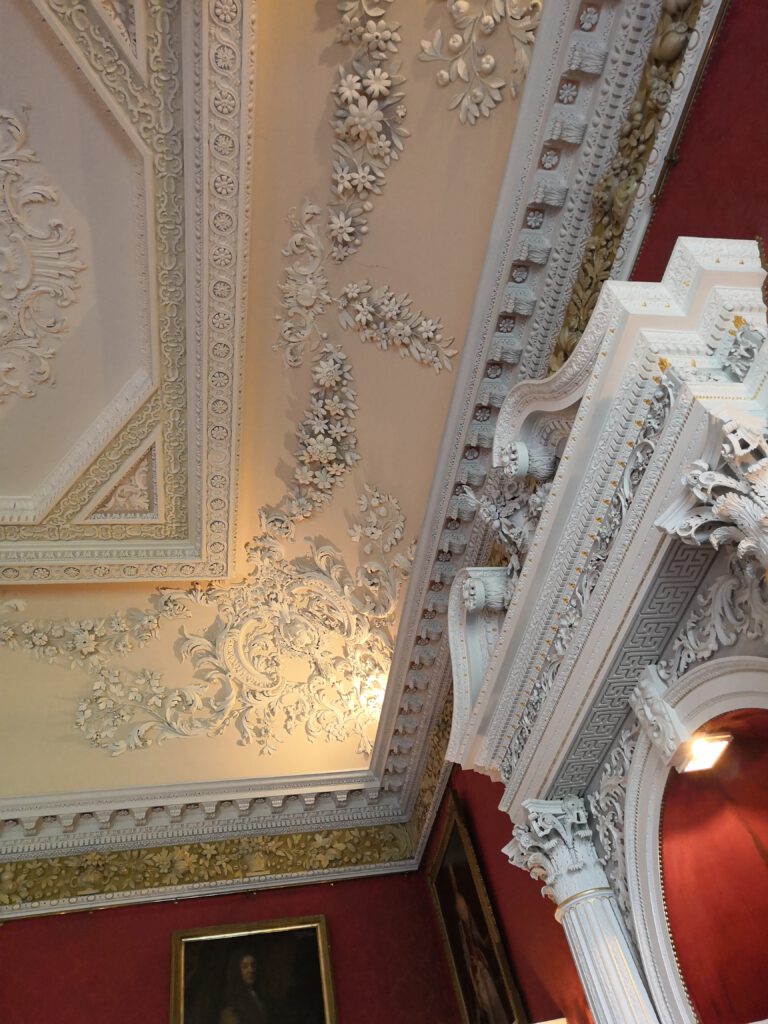
The title of Marquess of Atholl was created for John Murray, 2nd Earl of Atholl by the restored Charles II. The title Duke of Atholl wasn’t granted until 1703, when it was granted to the 2nd Marquess.
Remaining loyal to the Government during the first Jacobite rising in April 1689, it was Atholl’s factor who held the castle for King James, with Viscount Dundee visiting in May of the same year. Two months later Ballechin refused entry to Atholl’s son and heir, Lord John Murray.
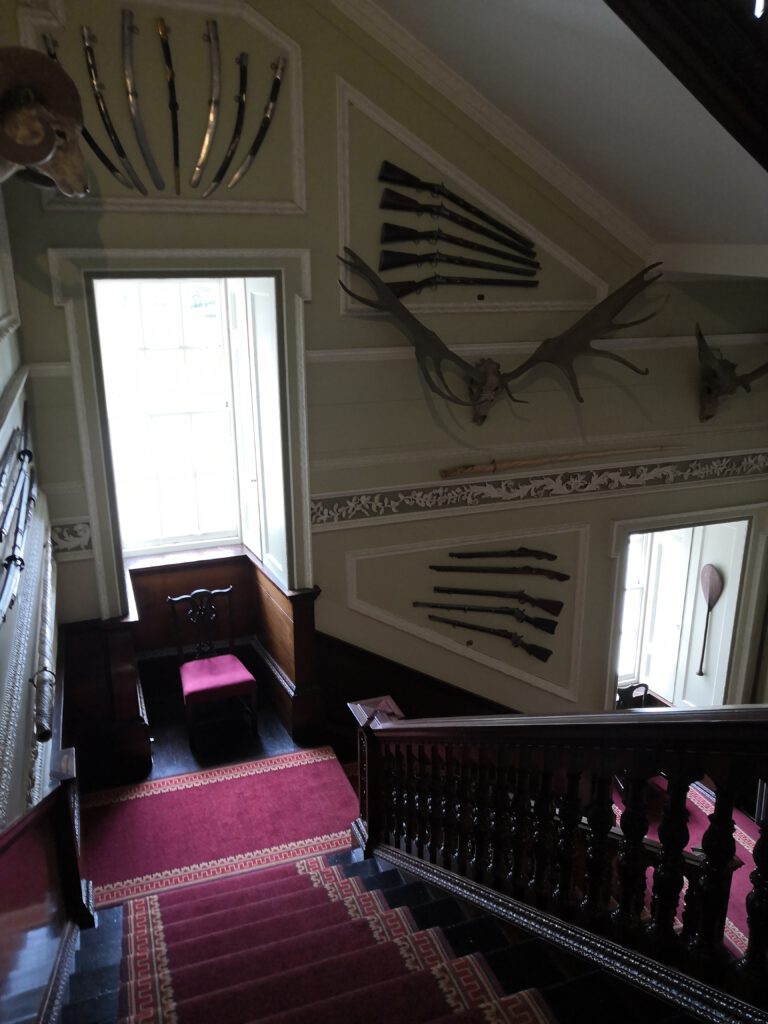
Murray lying siege to the castle and General Mackay approaching to seize the castle for the Williamites let to the crucial Battle of Killiecrankie. Viscount Dundee simply didn’t want to retreat and surrender the castle. The Jacobites won the battle, however, Dundee didn’t survive the battle, at least his wish was fulfilled and the castle stayed in Jacobite hands for quite some time. Viscount Dundee or Bonnie Dundee as he was also referred to, was laid to rest on the castle grounds in St Brides Kirk.

It was at Blair Castle that the Jacobite Highland chiefs swore a bond to continue the rising. It is no wonder that the castle still played a central role in the rising of 1745 during which the Bonnie Prince, Charles Edward Stuart occupied it not just once but twice. Before the famous battle of Culloden he stayed there in February 1746 for several days, sadly the Jacobites abandoned the Castle and it was soon occupied by Government forces as well as the Lowland Clan Agnew, keeping the Jacobites out during the last stages of the rising in March, nearly being starved to death, if the Jacobites wouldn’t have withdrawn to fight the Battle of Culloden (The Battle of Culloden – A scottish World) Blair Castle would have once more been occupied by loyal Scots. This last siege to Blair Castle makes it the last besieged Castle in Britain.

What has to be mentioned at least shortly is the Isle of Man, the 2nd Duke of Atholl had gained the sovereignty of the Isle in 1736 and it was held until after the Duke’s death up till 1765, when it was finally given to the Crown.
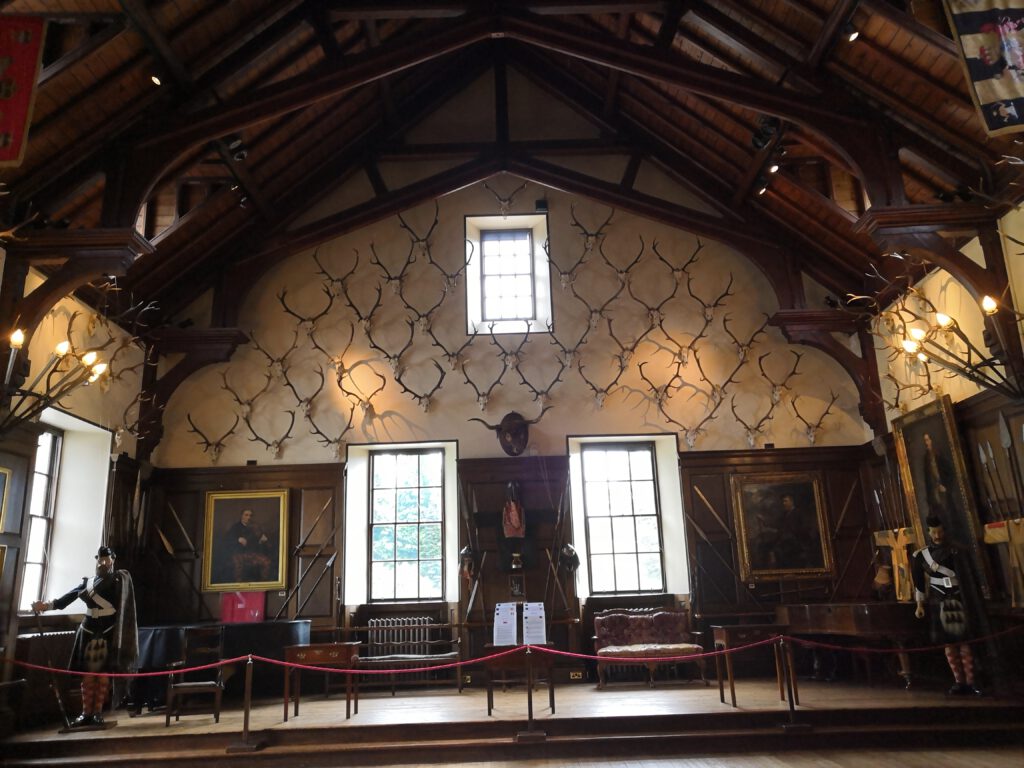
Queen Victoria is to this day well known for her love for Scotland and so it is no wonder that the Queen visited Blair Castle together with Prince Albert in 1844, this occasion is also mentioned as the time in which the Atholl Highlanders were established, with the permission of her Majesty.

Serving as a hospital in World War One the castle has been busy ever since with thousands of visitors travelling there each year, starting with its opening to the public in 1936. In 2011 parts of the castle started burning, not for the first time, to be exact the clock tower of the castle, the roof of it and the second floor then collapsed into the first floor. In 2012 the clock tower was restored again.
The castle as you see it today dates back into different periods of time. The oldest part being the Comyn’s Tower which once was six-storey high and mostly dates back to the 15th century though the fabric partly is from the 13th century, today only the lower part of the tower survives. With the extensions now forming the central part of the castle we move into the 16th century part of the castle. South of the central part you can find the apartments which were added around the mid-18th century.
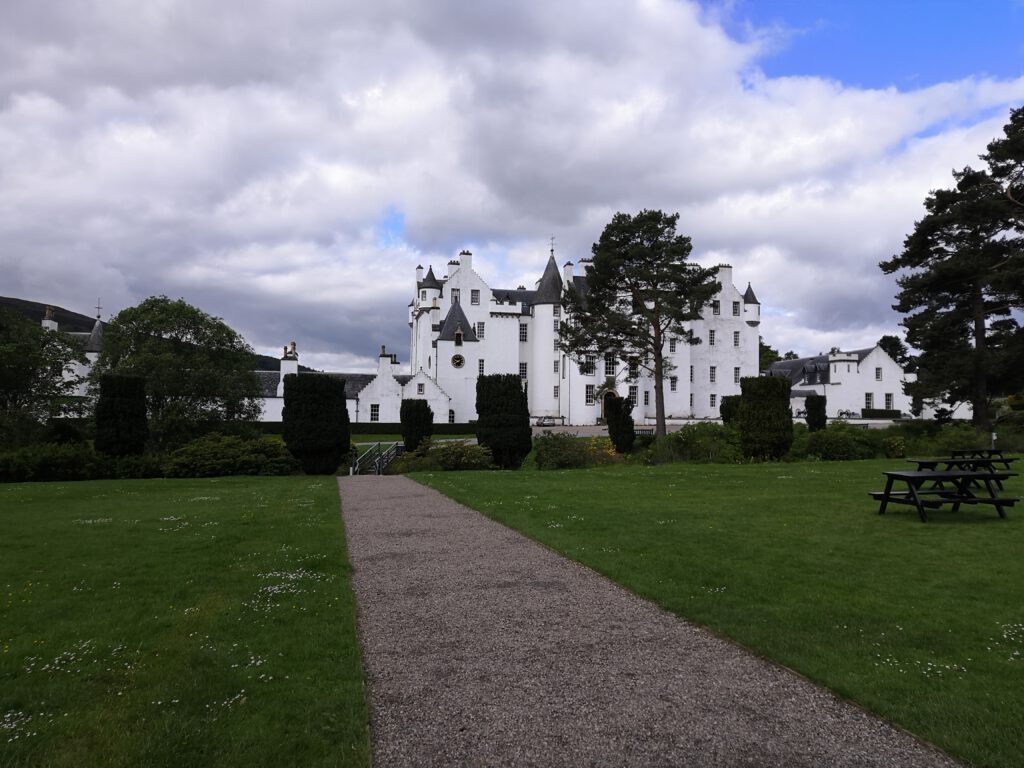
It is the south-eastern range with which we get back to fires destroying the castle or parts of it, this range incorporates the clock tower which needed rebuilding after a fire in 1814. In the 1870s the castle was remodelled to end up in today’s state with the building being remodelled and a ballroom being added and the upper storeys being removed to give the castle the style of a Georgian Mansion rather than a traditional castle, in 1885 it was once more remodelled and a new ballroom wing was added.
Inside the castle it is a bit like in a museum, with big collections of weapons (partly used in the Battle of Culloden), hunting trophies, souvenirs of the Murray clan, paintings, furniture, ethnographica, needlework and much more all collected by the Murray family over many generations, being on display.

Apart of this kind of museum style the castle also provides the garrison for the Atholl Highlanders which I mentioned before, being the only legal private army still remaining in Europe.

The castle itself however is not the only interesting place in this pictures landscapes which belongs to the estate of Blair Atholl. There are lovely gardens and an old kirk located on the grounds as well, though the whitewashed castle walls are the first significant thing you will spot while heading up the road to the entrance.
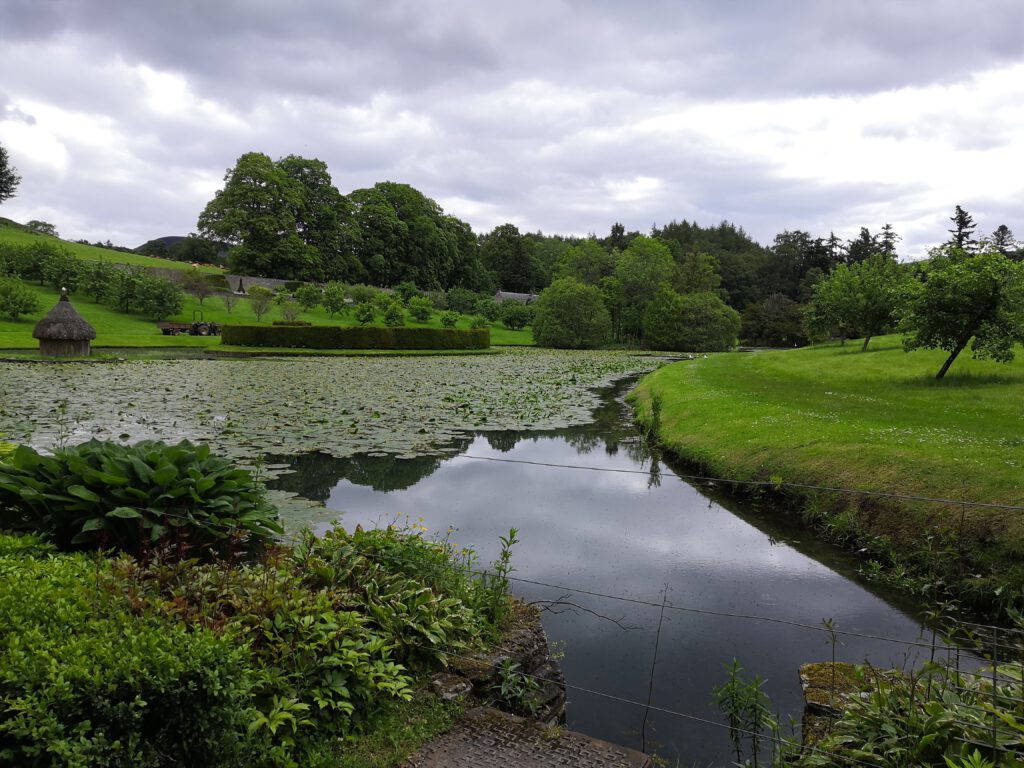
The ruins of St Bride’s Kirk ly very idyllic within the grounds and to this day can be easily spotted, while next to it lies the family burial ground, inside the kirk itself Bonnie Dundee was laid to rest. It formerly was the village church of Old Blair but fell into disuse after 1823 when the estate village was relocated.

In the gardens you can enjoy a nine-acre walled garden, Hercules Garden, with different and partly exotic plants as well as a Chinese bridge, a trail for young kids as well as an adventure playground and Red Deer Park. In Diana’s Grove you can find some of Britain’s tallest and finest trees, such as a Grand Fir which in 2009 was measured an incredible 62.7 metres, making it the second-tallest tree in Britain. All over the grounds visitors can spot local wildlife as well as peacocks as well as lovely views across Highland Perthshire, a truly remarkable region which has to be explored.
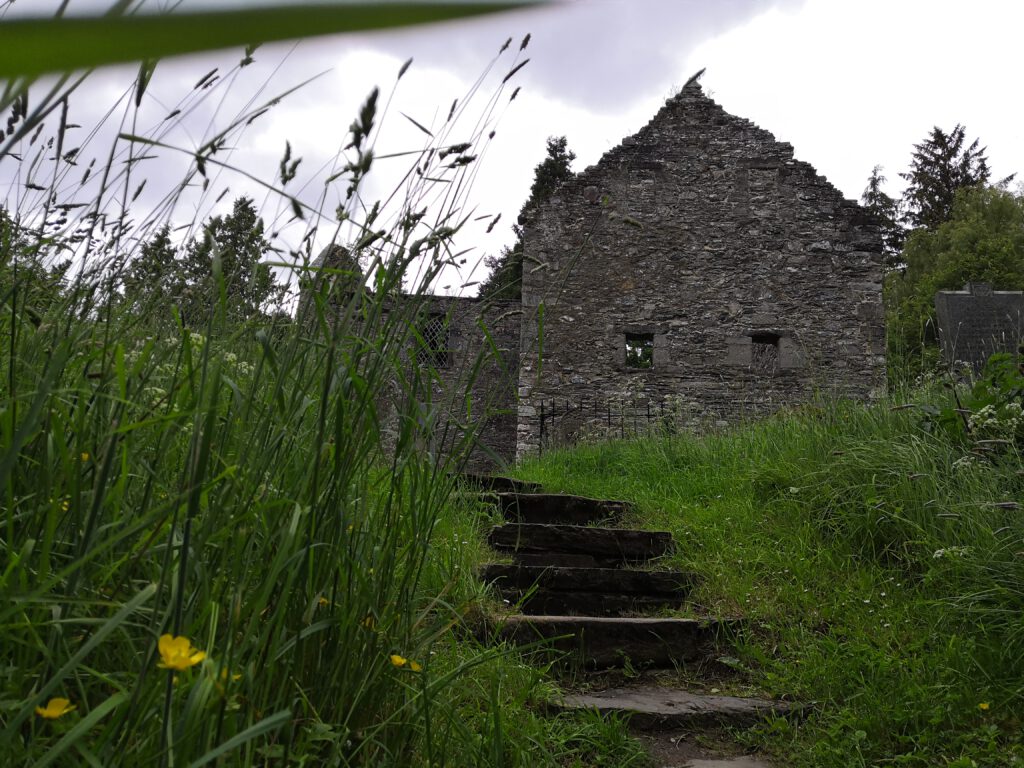
Blair Castle is worth a visit for sure, having been the home of 19 generations of the Stewarts and Murrays of Atholl it witnessed many famous people visiting and enjoying the grounds, such as Edward III of England in 1336, James V in 1529, Mary Queen of Scots in 1564, the famous poet Robert Burns in 1787 and her majesty Queen Victoria in 1844.
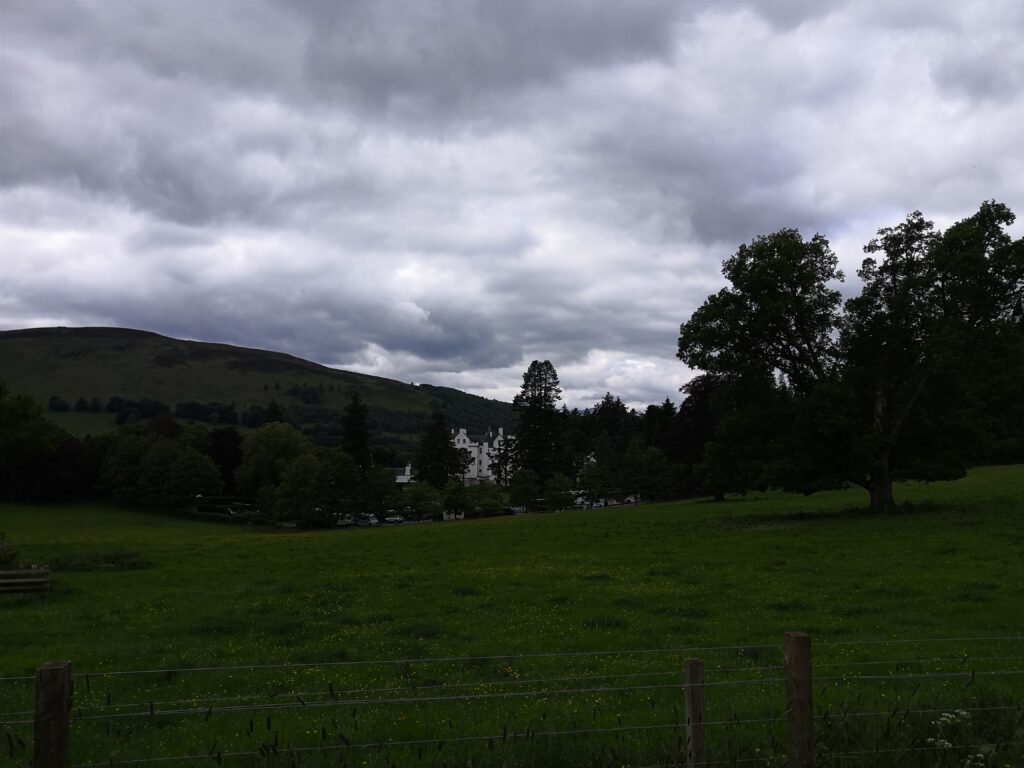
To this day the Dukes of Atholl still hold many titles such as Viscount of Balquidder, Glenalmond and Glenlyon, Marquis of Tullibardine and Earl of Strathtay and Strathardle. This and the history about the Dukes of Atholl make me feel as if this is one of the last bits of Scottish history still surviving.

Along with all the other things you will be able to experience on the grounds you might even be able to spot a ghost… though it is not clearly stated if its Blair Castle in Blair Atholl or Blair Castle in Ayrshire there is a ghost connected to the name Blair Castle, a ‘Grey Lady’ to be exact, gliding about silently having spoked a couple of people over the years.


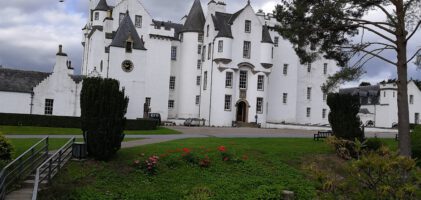
Pingback: Blair Atholl and Pitlochry – A scottish World